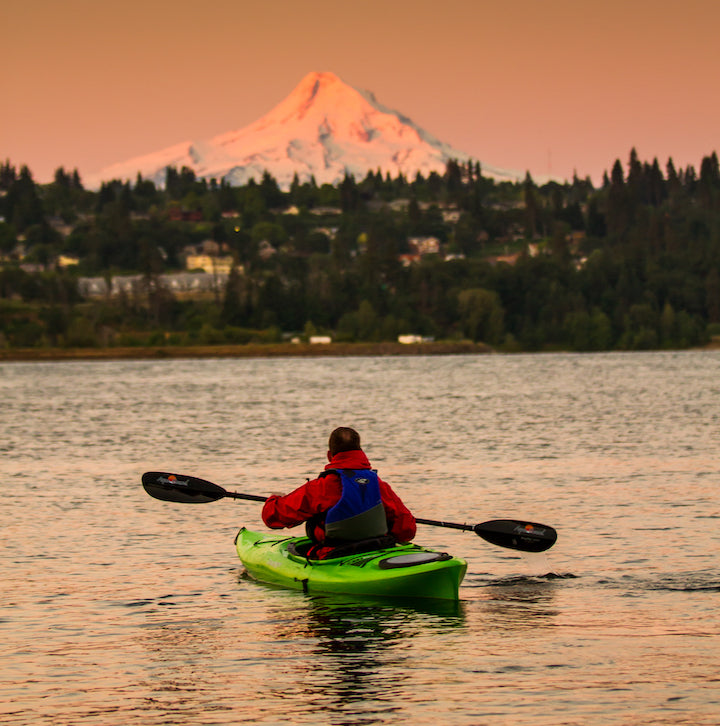What to Wear Kayaking: Dress for Immersion

When you’re considering what to wear kayaking, one of the most important safety tips to keep in mind is: dress for the water temperature, not the air temperature. Dress as if you’ll be in the water…just in case you end up in the water.
This short video from the US Coast Guard shows a kayaker choosing between two options—a flannel shirt or a paddling jacket:
There’s nothing wrong with kayaking in a flannel shirt as long as you stay in your boat, dry. That’s the most likely scenario, especially on a calm, small lake like the one shown in the video.
But, the point of the video is this: Whenever you’re on the water, there’s a chance you’ll end up in the water. It’s a risk we all face when paddling. It’s not something we plan on, and it rarely happens…but it can happen.
So when we paddle in water that’s colder than 60 or 70 degrees, it’s important we think about what to wear before we get in our kayak, canoe, packraft or on our paddle board. It could end up to be a life-saving decision.
This is especially important if you’ll be paddling in the backcountry and/or camping away from your car and other points of civilization.
When to Dress for Immersion
Know the temperature of the water you’ll be on. Even if the air temp is warm or hot, the water temp might be cold enough to cause hypothermia within minutes.
Examples of cold water include:
- Any lake or river in the north in late spring, shortly after ice-out. Large, deep lakes often remain cold all summer long.
- Lakes and rivers in the south, if nighttime winter temps have been below freezing for several days or more.
- Any high-altitude lake or river…especially those fed by glacial run-off.
- The northern Great Lakes all year around, especially Superior and the northern ends of Michigan and Huron.
Wearing a PFD (personal flotation device, or life jacket) is a must, but it won’t stop hypothermia if the water is cold enough.

How to Dress for Immersion
One of the first rules of paddling in any temperature is: don’t wear cotton. Once cotton gets wet, it stays wet for a long time. You’ll rapidly lose body heat wearing a wet cotton tee, flannel shirt or denim jeans.
Cotton clothing is also heavy when it’s wet, which makes it harder to swim to safety if you have to. Instead, choose clothing made from quick-dry and lightweight materials like polyester and nylon.
Here are examples of clothing suitable for cold water kayaking:
- A wetsuit or drysuit will insulate you the best if you should happen to capsize in big water far from shore, or in strong current where you’re likely to be taken downstream for awhile before you can scramble out.
- A dry top or splash jacket have neck, waist and wrist gaskets that help keep water out. They’re made of waterproof material that’ll dry quickly when wet.
- Dry pants or bibs, like these from NRS, will help keep you drier and will dry quickly again once you’re out of the water. If you plan to make kayaking part of your life, they’ll be worth the investment.
- Paddling shoes are designed to either dry quickly or keep water out.
Have fun out on the water…and be safe at the same time!
Do you have paddle questions our friendly Customer Service Team can help you with today? Content them: 715-755-3405 • sales@aquabound.com
More for you...





